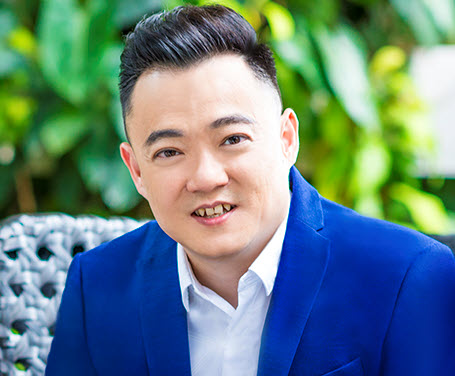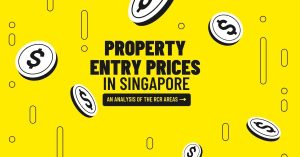If you’re like the average Singaporean, you’ll probably dream of being a landlord and earning passive income every month.
Picture this: without lifting a SINGLE finger, your bank account increases by $3,500, every single month.

Now, this rental income opens up a world of opportunities. You can use it to:
- Employ a helper or caregiver for your parents, who are growing old
- Go on holidays and spend some quality time with your friends and family
- Pay for your children’s current tuition fees, or save up for their future education
Wouldn’t you like to be able to afford to pamper yourself and your family, and be able to travel and explore the world with your loved ones?
Of course you would!
Now, at this point, you might be thinking…
I’m just a regular salaried employee. I’m not from a rich family, and I don’t own a business. How can I possibly buy an additional property for investment?
Well, the truth is, owning two properties is 100% achievable for most Singaporeans.

Personally, I’ve got plenty of clients who were initially unsure about whether they could afford a second property… and today, ALL of these clients are landlords, and they’re happily earning their passive income every month.
Now, I know that a lot of property agents talk about “hacks” or “tricks” that you can use to buy investment property, but I don’t like using these terms.
To be honest, what it REALLY boils down to is proper, systematic planning.
Sit down, look at your finances, and look at how much you can spare. Then forecast the potential rental income that you can earn, and consider whether this can cover part or all of your monthly mortgage. (This is what we call Other People’s Money or OPM… I’ll share more about this later on in this post).
Okay, so now that you know the basics of how you go about buying an investment property, let’s take a closer look at why owning two properties is beneficial.
Reason #1: Passive income
We’ve talked about this previously… everyone loves passive income.

Reason #2: Greater flexibility
When you have more than one property, this lets you cash out more easily when the property market picks up.
Consider this: say property prices are at an all-time high, and you’re thinking of selling your current home so that you can earn a profit.
Obviously, there are a LOT of factors that will hold you back, and hinder your decision, including:
- Will you be able to find a new home (one that you and your entire family likes), in such short notice?
- Is it too troublesome to pack up everything and move? Other than moving your physical belongings, you’ll have to get used to your new neighbourhood. Your children may have to switch tuition centres, or go to a new piano/ballet/martial arts school.
- Will your children be accepting of the move? If you uproot them from their current neighbourhood and move somewhere else, will this affect their studies?
- You’re selling high, but this means that you have to buy high as well. Will you really profit from the move?
Basically, if you own only one property, there’s a LOT of inertia involved in selling that property. This makes it super difficult for property owners to capitalize when the market is good.
In fact, 99.9% of the time, those who own only one property will just go through the ups and downs of the property cycle WITHOUT making any money.

Reason #3: Wealth preservation
When you’re in your 30s or 40s, retirement seems like a long time away.
But deep down, we all know that the more we procrastinate, the more unprepared we’ll be. Basically, we should start planning ASAP.

Now, let’s crunch some numbers based on the following assumptions:
- You retire at the age of 65
- You spend 20 years in retirement before passing away at 85 (like the average Singaporean)
- You and your spouse spend $2,000 each, or a total of $4,000 per month in your retirement
Here’s what you’ll be spending over the span of your entire retirement:
$4,000/month x 12 months = $48,000 per year.
$48,000/year x 20 years = $960,000.
If you have no rental income, this $960,000 (let’s round it up to $1M) will have to come out of your own savings.
Think about it… $1M of your hard-earned money, used up just like that.

But if you’ve got an investment property on hand that’s churning out income for you every month, you won’t have to dip into your savings.
This means that you can keep your $1M, and pass it on as a legacy to your kids.
As parents, we all want the best for our kids. Would you rather spend your $1M on your retirement, or fund your retirement with passive income, so that you can give your kids a headstart in their lives? The answer is obvious.
Using Other People’s Money (OPM) to fund your investment property
Earlier in this article, I talked a bit about the technique of using OPM to fund your investment property.
Now, I know this sounds like it’s too good to be true, but it’s a tried-and-tested method, and tens of thousands of Singaporeans have relied on this method to buy a second property.
How does OPM work? Here’s what it involves:
Step 1: Strategically assess the properties on the market, and decide which property is likely to give you the best returns.
Step 2: Buy the property, paying for the downpayment with your money.
Step 3: Rent out your property to a tenant, and use the rental fee (OPM) to finance your monthly mortgage.
That’s basically it… in time to come, your property will be fully paid for, and you’ll own a second property that you’ve successfully financed using OPM!
To better illustrate the concept of OPM, let’s look at the table below. This shows a couple’s monthly repayments after they put $136,000 worth of downpayment on an investment property costing $680,000:

Here, the monthly mortgage consists of two components: Principal and Interest.
Assuming the couple’s rental income covers the monthly mortgage, this means that the $1324 that they accumulate on the principal every month is paid for by the tenant. By the end of the first year, they’ll have accumulated $16,015 worth of OPM, giving them 11.4% Return On Equity.
Fast forward five years later, the total principal accumulated works out to $80,000. Again, this is fully paid for by the TENANT — not the homeowners.

Now, imagine you’re the couple in the above scenario. Your tenant helps you chip away at your loan every month — and without putting in a single cent of your own, the amount you owe the bank lessens every month.
By the time you hit 65 and retire, you’ll have two properties, both of which are FULLY paid. You can stay in one of these properties, and use the other property to generate rental income, and fund your retirement years.
Now, I’ve just shared a condensed version of the entire process for you, but obviously there’s a lot of nitty-gritty to work out.
For example… what if you want to buy a second property, but you don’t want to pay ABSD? What type of property should you buy? How can you analyze the properties on the market to figure out which will generate the most rental demand?
Those are all GREAT questions… but there’s a lot to unpack, and it’s impossible to fully explain all of them in a single blog post.
If you’re keen to learn more about buying a second property so that you can earn passive income, preserve your wealth and leave a legacy for your kids, I’d be happy to meet you for a non-obligatory chat.
In this session, I’ll share more about:
- OPM and the other strategies you can use to invest in your second property
- How the market is currently performing, and whether it’s a good time to buy
- How to spot properties with good margin + rental demand
To get in touch with me, you can contact me at +65 98801790.
Time to take your first step to becoming a landlord! 😉





